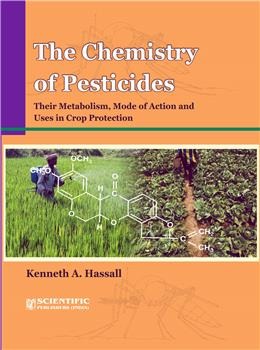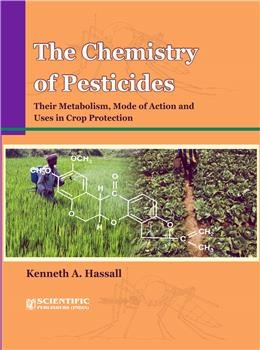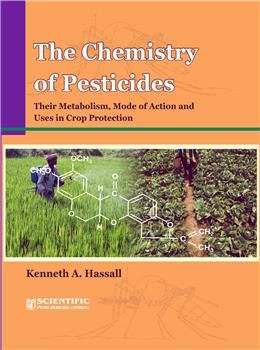The Chemistry of Pesticides their Metabolism, Mode of Action and Uses in Crop Protection
The Chemistry of Pesticides their Metabolism, Mode of Action and Uses in Crop Protection is backordered and will ship as soon as it is back in stock.
Couldn't load pickup availability
Genuine Products Guarantee
Genuine Products Guarantee
We guarantee 100% genuine products, and if proven otherwise, we will compensate you with 10 times the product's cost.
Delivery and Shipping
Delivery and Shipping
Products are generally ready for dispatch within 1 day and typically reach you in 3 to 5 days.
Book Details
-
Author: K.A. Hassall
-
Publisher: Scientific Publishers
-
Language: English
-
Edition: 1st Edition, 2021
-
ISBN: 9788172338190
-
E-ISBN: 9789388148818
-
Binding: Hardcover
-
Pages: 372
-
Size: 6.50 x 9.75 inches
-
Weight: 720 grams
About the Book
This book offers an in-depth and comprehensive account of the chemical control of pests and diseases, drawing upon multiple disciplines such as chemistry, biochemistry, physiology, physics, and ecology. It provides a rare synthesis of information on the formulation, biochemistry, physiological effects, and mode of action of major pesticide groups, shedding light on why these topics are crucial for the effective use of pesticides in agriculture.
The book is structured as follows:
-
Economic Aspects of Pesticides
An introduction to the economic considerations of pesticide use, including their role in agriculture and the challenges posed by their use. -
Toxicology and Precautions
Discusses the toxicological effects of pesticides and provides safety precautions essential for their marketing and application. -
Formulation and Physicochemical Factors
Detailed coverage of the different pesticide formulations, as well as the physicochemical factors involved in their effectiveness. -
Biochemical Principles of Pesticide Metabolism
Explains how pesticides are metabolized in organisms, providing insights into their persistence, selectivity, and efficacy. -
Insecticides, Fungicides, and Herbicides
Core focus on major pesticide groups:-
Insecticides: Covers organophosphates, carbamates, and pyrethroids, exploring their modes of action and environmental persistence.
-
Fungicides: Discusses systemic and non-systemic fungicides, explaining the basic principles of controlling fungal diseases.
-
Herbicides: Delves into pre- and post-emergence applications, highlighting the advantages and limitations of herbicide use.
-
-
Other Pesticide Types
Briefly covers compounds with acaricidal, nematicidal, and molluscicidal properties, expanding the scope of pest control options. -
Foliar and Soil-Acting Compounds
An exploration of the chemistry and uses of foliar and soil-acting compounds, detailing their importance in pest and disease control.
Key Features:
-
Comprehensive overview of pesticide chemistry and its applications in pest control.
-
Covers the formulation, biochemistry, and physiological effects of pesticides.
-
In-depth discussion of insecticides, fungicides, herbicides, and other pesticide categories.
-
Suitable for students, researchers, and professionals involved in pest control, agriculture, and environmental science.
This book serves as a valuable resource for anyone looking to understand the scientific basis of pesticide use, offering practical insights into their role in modern agriculture and pest management.





